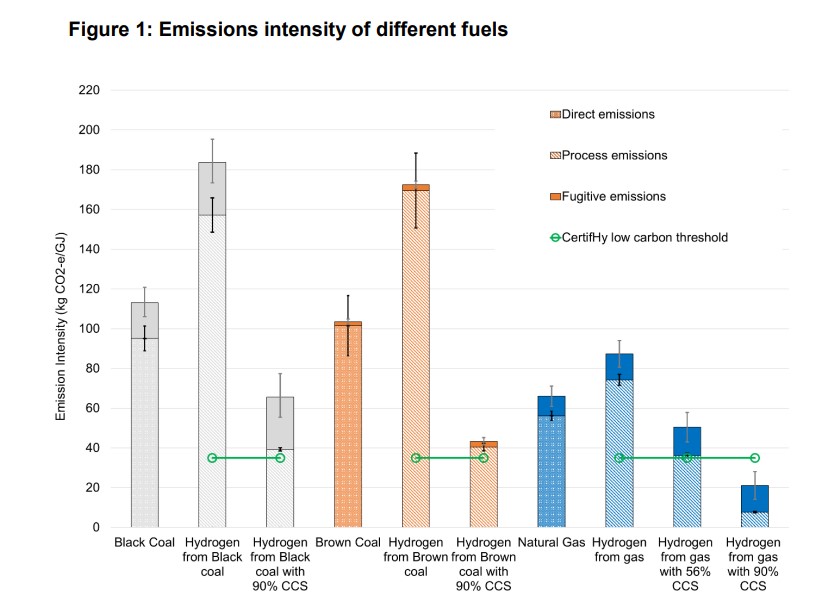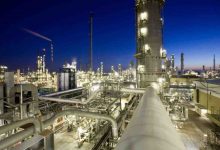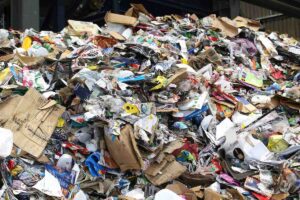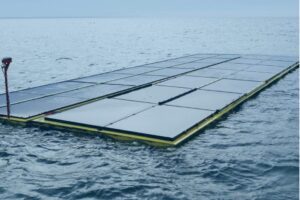Advocates for an Australian green hydrogen industry have issued a fresh plea for the country to focus on wind and solar as the fuel source, arguing that labels like ‘blue’ hydrogen can hide the true emissions impact of hydrogen produced using fossil fuels.
Australia’s emerging potential as a hydrogen export superpower is gaining increasing attention, particularly as a way for Australia to tap into a rapidly growing global demand for zero emissions energy.
While ‘green’ hydrogen, produced using renewable energy, has the potential to drive emissions reductions in a wide range of transport and industrial sectors, the fossil fuel industry has sought to pitch hydrogen produced using fossil fuels as more marketable ‘blue’ hydrogen.
Speaking at the Smart Energy Conference on Thursday, the Australian National University’s Dr Emma Aisbett said that the proper certification of hydrogen production – including information about its emissions footprint – was critical to properly understanding the emissions produced through different methods and that buyers of hydrogen received more information than mere labels of ‘blue’ or ‘green’.
Aisbett, who is an associate director of the ANU’s Zero-Carbon Energy for the Asia-Pacific (ZCEAP) Grand Challenge, pointed to research showing the comparative emissions intensities of different hydrogen production methods that showed the significant variability in the emissions intensity of ‘blue’ hydrogen production methods.
The analysis, published in a working paper by the ZCEAP Grand Challenge, compared the emissions intensity of hydrogen production using a range of fossil fuel feedstocks, including methods paired with carbon capture and storage.
The researchers found that even when fossil fuel hydrogen production is combined with a carbon capture and storage element, the resulting emissions intensity can still be very high.

In particular, when this ‘blue’ hydrogen is burnt in the process of electricity generation, the resulting emissions intensity can even exceed that of electricity generated through the direct combustion of coal, despite the use of carbon capture and storage.
As the researchers note, not all of the greenhouse gas emissions produced from processes that extract hydrogen from fossil fuels can be captured. This includes coal gasification and steam methane reforming, which have been promoted as ways to produce low-cost hydrogen but usually require fossil fuels to be burnt for heat.
The analysis also suggests that producing hydrogen from grid based electricity can be even worse in terms of emissions intensity, as efficiency losses in the production process can amplify the resulting emissions intensity of the hydrogen produced.
Hydrogen produced using renewable electricity, researchers argue, is the only viable way to achieve truly zero emissions hydrogen.
Development manager for CWP Renewables, Andrew Dickson, told the Smart Energy Conference that demand for zero emissions hydrogen was coming from emerging hydrogen markets, and this would necessitate a certification scheme.
CWP Renewables is developing a hugely ambitious renewable hydrogen project in the Pilbara region of Western Australia, which could produce hydrogen using up to 26GW of dedicated wind and solar capacity, representing one of the largest energy projects in the world.
“Certification is the essential building block for the export of new zero carbon products including hydrogen, ammonia and steel. Our customers want to know how much carbon is embedded into the products they are buying and how and where they are produced,” Dickson said.
“You need to be able to compare apples and apples because even with ‘blue’ hydrogen, one type of ‘blue’ and another ‘blue’ can be completely different with their emissions profile.”
“It’s important that our trading partners know exactly what they’re getting. And the more ambition they have, the more imperative there is to stop flirting with blue and go straight to green hydrogen.”
The research highlights the need for a certification scheme for ‘green’ hydrogen – allowing truly ‘zero emissions’ hydrogen to be distinguished from the ‘blue’ hydrogen being pushed by fossil fuel interests.
The Smart Energy Council recently launched its own hydrogen certification scheme late last year and has already secured the backing of both the ACT and Victorian governments.
Victorian energy minister Lily D’Ambrosio announced on Wednesday that the state government would sign on to the hydrogen certification scheme as a foundation member.
Through the recent federal budget, the Morrison government has committed $275.5 million towards the creation of clean hydrogen hubs in regional Australia and the implementation of a hydrogen certification scheme.










